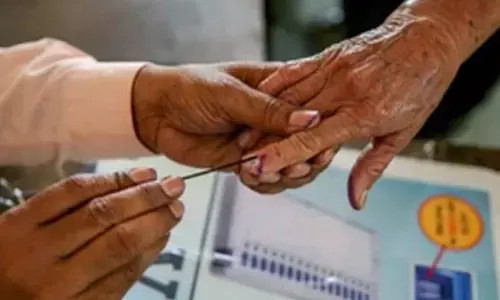India's consumer digital economy to touch $800 billion by 2030

India’s consumer digital economy to touch $800 billion by 2030
Driven by online shopping across the spectrum, India's consumer digital economy, which was pegged at $85-90 billion in CY20, is expected to become a $800 billion market by 2030, a new report showed on Wednesday.
Bengaluru: Driven by online shopping across the spectrum, India's consumer digital economy, which was pegged at $85-90 billion in CY20, is expected to become a $800 billion market by 2030, a new report showed on Wednesday.
Online retail market in India alone is set to become the third-largest online retail market by scale by 2030 with an annual gross merchandise value (GMV) of $55 billion in CY21 and $350 billion in CY30, according to the report by market research firm RedSeer.
The digital economy includes 60 per cent of travel, 40 per cent of non-grocery retail, 30 per cent of education, 25 per cent of food and beverages services and 6 per cent of pharma/grocery, RedSeer said during its flagship event 'Ground Zero 5.0' attended by Niti Aayog CEO Amitabh Kant, T.V. Mohandas Pai, Chairman, Manipal Global Education Services and Sanjeev Bikhchandani, co-founder, Info Edge.
"Today, over 50 per cent customers say they use online services because of convenience. With Covid, digital services have undoubtedly served the customers very well. The next wave of entrepreneurs will create innovations which will make the Indian model successful globally," said Anil Kumar, founder and CEO of RedSeer.
According to the data released by RedSeer Consulting, 88 per cent of the online shoppers that will be added between 2020-2030 will be from Tier 2+ cities.
Further, more than $7 billion cumulative incremental online retail transactions to be added from Tier 2+ city customers over CY20-30, while easily more than $150 billion cumulative incremental online retail GMV to be added from Tier 2+ city customers over CY 20-30.
"Covid has caused an inflection in e-commerce penetration across city tiers, lowering costs of servicing tier-II and other smaller cities," the findings showed.
Additionally, 'kiranas' are expected to achieve approximately achieve $1.5 trillion sales by CY30.
E-Logistics in India has become the fastest growing market globally with over three billion shipments in 2020. The new-age logistics players are expected to deliver 2.5 billion D2C shipments by 2030.
With the rise of e-commerce, the need for specialised delivery service emerged, which led to the overall growth of the logistics segment.
"The emergence of this sector created 500,000 employments for gig workers in 2021 across captive and third-party logistics. The new-age 3PL logistics players have delivered 850 million shipments in 2020," the report noted.
According to RedSeer research, shared mobility saw a sharp decline due to the second wave-led lockdowns in the last two months.
Although the autos segment recovered the fastest, the overall sector merely clocked 18 million rides, a drop from 113 million rides in January last year.
"However, while the shared mobility is dipping, personal mobility space is riding on a wave of strong traction seen since last year," said the report.



















